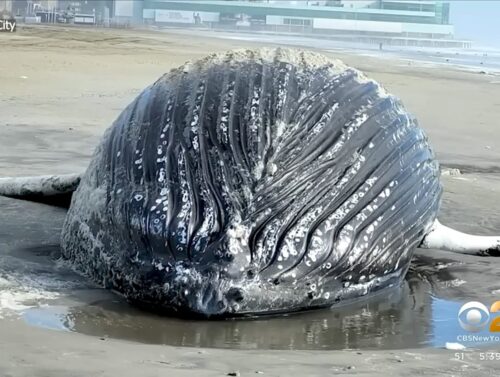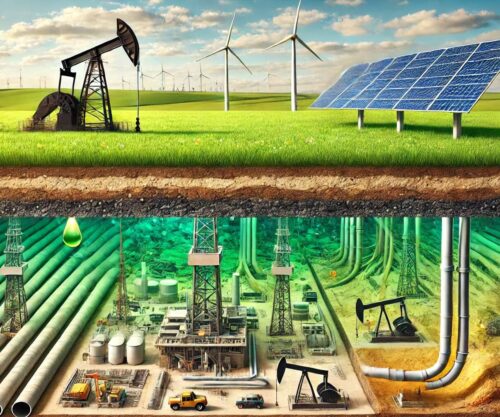
The death of coal, held to be the eldest and ugliest of the three fossil fuel siblings, has long been exaggerated Mark Twain-style. [emphasis, links added]
While oil and natural gas needed to be tolerated for some time in the “energy transition”, dirty coal — responsible for soot, smog, and respiratory disease — was already beyond the pale for many decades in most Western developed countries.
The latest twist in this tale of a death exaggerated starts with a Guardian story on Monday last week. In his trip to China — the world’s largest coal consumer by far, and with no letup in sight — the UK Secretary of State for Energy Security and Net Zero Ed Miliband “is hoping to shape a new global axis in favour of climate action along with China and developing countries, to counter Donald Trump’s abandonment of green policies in the US.”
Then, on Saturday, the Daily Mail reported that Miliband “admits his solar panels bought for English schools and hospitals are Chinese and may be made using coal.”
The hubris and the irony leap out.
The birthplace of coal and the industrial revolution and which once “ruled the waves” of 70% of the globe, Great Britain closed its last coal plant last year. It is number 22 on the list of the world’s largest CO2 emitters, accounting for a puny 0.8% of global emissions.
This pales in comparison to China at number one, spewing out 34% of the world’s emissions, and to the US, the next largest emitter, at 12%.
Apparently, “Mad Ed”, with his folly of climate leadership, still believes that the sheer illustrative example of a net-zero ‘green’ UK will lead the world into ditching fossil fuels.
As my colleague Ben Pile said pithily of Mr. Miliband’s China visit, “Don’t make me laugh.” In an oft-cited statistic, China builds an average of two coal power plants a week.
Meanwhile, in the latest sign that all is not well in the climate policy consensus between the two main parties in Parliament, leader of the Tory opposition Kemi Badenoch said in a speech (also on Monday last week) that net zero cannot be achieved by 2050 “without a serious drop in our living standards or by bankrupting us.”
The irony of calling for a “green industrial revolution” with solar and wind panels, batteries, and electric vehicles, which are largely themselves made with cheap Chinese coal power, seems to be beyond Miliband’s mental grasp.
Import reliance on China under the dictatorship of the CCP also seems to be of less concern to him than the alternative. God forbid dependence on foreign oil and gas imports: cue “geopolitical shocks” and the “whims of foreign tyrants”.
Never mind that the largest suppliers of oil and gas to the UK are Norway, the US, and Qatar, now that ‘climate leader’ Great Britain has barred itself from exploiting its own ample domestic oil and gas resources in the North Sea and onshore sites.
But leaving aside the hubris and irony, there was a final twist to coal’s exaggerated death narrative last week. On the same day that the Guardian wrote about Miliband’s noble goal of getting China on side in the “fight against climate change”, President Trump came out in Truth Social:
One of Trump’s better moves. Gain energy independence/dominance and make power cheaper for Americans. Instant coal miner jobs. It would benefit American businesses and probably lower the prices of other goods. Clean or not I don’t care. This is good. pic.twitter.com/ajz3OBUPrJ
— The Dank Knight 🦇 (@capeandcowell) March 17, 2025
After years of being held captive by Environmental Extremists, Lunatics, Radicals, and Thugs, allowing other Countries, in particular China, to gain tremendous Economic advantage over us by opening up hundreds of all Coal Fire Power Plants, I am authorizing my Administration to immediately begin producing Energy with BEAUTIFUL, CLEAN COAL.
Far From Death, Coal is in Rebirth
A source of dirty soot, smog, and adverse respiratory health in urban areas, coal was the classic sunset industry in the West. But local politics and swing states matter in US elections, as failed presidential-hopeful Hillary Clinton found out to her cost in 2017.
She claimed her biggest regret was doubling down on ex-President Obama’s “war on coal” and proclaiming on her campaign trail that “we’re going to put a lot of coal miners and coal companies out of business.”
At the national level, the extraordinary surge in projected electricity demand driven by exponential growth in AI, data centres, and crypto-mining has taken centre stage.
In a video interview on the sidelines of the CERAWeek energy conference in Houston two weeks ago, US Interior Secretary Doug Burgum said that the country should restart shuttered coal-fired power plants under President Donald Trump’s national energy emergency declaration:
“I think as part of the national energy emergency which President Trump has declared we’ve got to keep every plant open. And if there have been units at a coal plant that have been shut down, we need to bring those back on.”
The Interior Department said in an email to Reuters it was committed to “revitalizing the coal industry through the reduction of regulatory barriers and the promotion of energy independence.”
Secretary Burgum said, “We got to keep every coal plant open…. there is no Energy Transition but Energy Addition…we need to avoid the mistakes made by the UK and Germany of deindustrializing…we need abundant, reliable, low-cost energy.”
…snip…
Coal Reclaims Its Throne
Coal is what physicists call a “dense” energy source. A Tesla battery weighs over 500kg and requires 25-50 tons (i.e., thousands of kgs) of minerals to be mined, processed, and transported.
Yet, the Tesla battery’s stored energy is equivalent to a mere 30kg sack of coal. That sack of coal, of course, is cheap, versatile, and readily transportable.
And the Tesla battery merely stores power, you still have to get the electrons from elsewhere.
Unlike oil and natural gas, coal is a “non-political” fuel. It is the world’s most abundant energy resource. Its deposits are spread widely, if unevenly, around the world.
Its biggest exporters [ranked] are Indonesia, Australia, Russia, the US, Colombia, and Canada. In Asia, China, India, Vietnam, and Indonesia are among the world’s largest consumers of coal and its largest producers. They depend heavily on it for their energy and, hence, national security.
Coal, commonly vilified for being the dirtiest fossil fuel, is in fact, a success story of scientific progress. Key pollutants from coal combustion in power generation plants have fallen dramatically with technological improvements over the past several decades with the development of high-efficiency, low-emission plants.
These 4th-generation “ultra-supercritical” plants have dramatically reduced emissions of pollutants that adversely affect human health, including carbon monoxide, lead, sulfur dioxide (by 98%), oxides of nitrogen (83%), ground-level ozone, and particulate matter (99.8%).
The major remaining emission by coal power plants, carbon dioxide, contrary to common perception, is not a pollutant. Indeed, it is vital to plant growth and, hence, human life.
Consistent with President Trump’s caps-on remarks on “BEAUTIFUL, CLEAN COAL”, Environmental Protection Agency Administrator Lee Zeldin has requested permission from the White House to reverse the 2009 “Endangerment Finding” that allowed the EPA to regulate carbon dioxide as a “health threat” during the Obama and Biden years.
Read full post at Tilak’s Substack



















I’ve been looking at the AEMO site daily for several years, at 1500 hrs, Australian Eastern Time. Coal, black and brown, is generally providing between 40% to 60% of power being generated at that time.
https://aemo.com.au/energy-systems/electricity/national-electricity-market-nem/data-nem/data-dashboard-nem#nem-dispatch-overview
In Australia, state governments are paying coal plant owners to keep them open because wind and solar can’t keep the lights on….
Coal works better then Wind and Solar and is Cleaner and Better then Wind and Solar